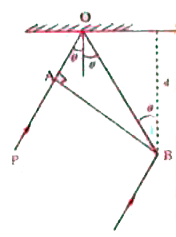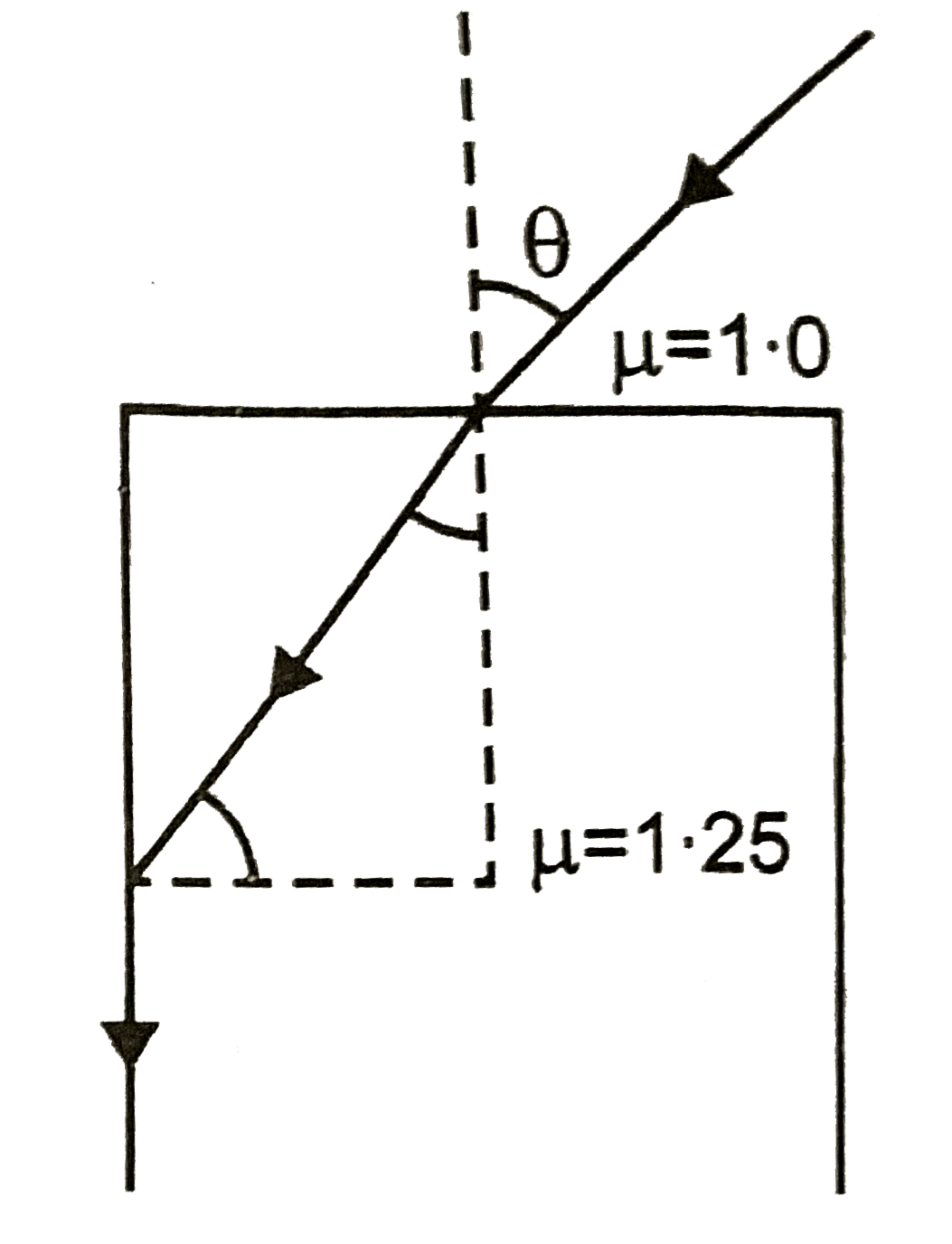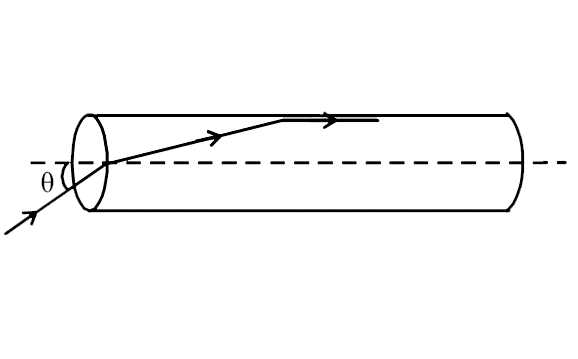In the figures PO and QB are the extreme rays of a wavefront AB of monochromatic light of wavelength λ. The value of angle θ for which the ray QB and ray OB interference constructively is

AOOB=cos2θ
AO=OBcos2θ on reflection at O the ray suffers a phase difference of π which is equivalent to a path difference of λ2. For constructive interference path difference should be λ
∴AO+OB=λ2 for constructive interference
OBcos2θ+OB=λ2 dOB=cosθ
OB(1+cos2θ)=λ2, dcosθ⋅2cos2θ=λ2
cosθ=λ4d⇒θ=cos−1λ4d.
Topper's Solved these Questions
Similar Questions
For constructive interference to take place between two monochromatic light waves of wavelength λ , the path difference should be
View SolutionTwo identical light sources S1 and S2 emit light of same wavelength λ. These light rays will exhibit interference if
View SolutionConsider the ray diagram for the refraction given Fig. The maximum value of angle θ for which the light suffers total internal reflection at the vertical surface, is.
 .View Solution
.View SolutionEstimate how large can be the aperture opening to work with laws of ray optics using a monochromatic light of wavelength 450 nm, to a distance of around 20 m.
View SolutionA prism of refractive index √32 and refracting angle is 45∘ is placed in air. One of the two refracting surface of the prism is silvered and a ray of monochromatic light enters the prism from the other face at an angle θ. If the ray retraces its path, then what is the value of θ (in degree)?
View SolutionA soap film of thickness t is surrounded by air and is illuminated at near normal incidence by monochromatic light wavelength λ in the film. With respect to the wavelength of the monochromatic light in the film, what film thickness will produce maximum constructive interference
View SolutionA light ray of frequency v and wavelength λ enters a liquid of refractive index 3/2. The ray travels in the liquid with
View SolutionA transparent solid cylindrical rod has a refractive index of 2√3 .It is surrounded by air. A light ray is incident at the mid-point of one end of the rod as shown in the figure. The incident angle θ for which the light ray grazes along the wall of the rod is:
 View Solution
View SolutionA ray of light falls on a mirror normally. What are the values of angle of incedence and the angle of reflection.
View SolutionA ray of light makes an angle of 10∘ with the horizontal and strikes a plane mirror which is inclined at an angle θ to the horizontal. The angle θ for which the reflected ray becomes vertical, is
View Solution

